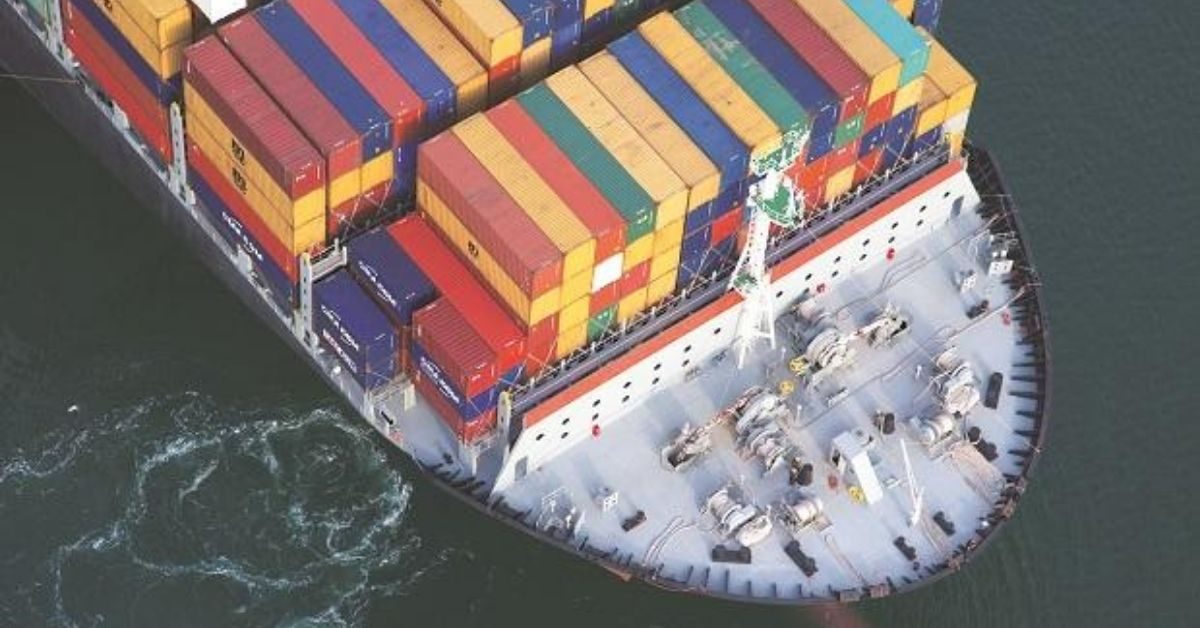A new report from independent UK consultancy UMAs seeks both to quantify some of the potential costs and contribute to the discussions by highlighting the challenges that lay ahead for the industry, echoing similar concerns raised by industry CEOs attending the current COP 28 conference and other reports that highlight the potential near-term shortages in the supply of alternative fuels.
“The role of the early movers including cargo owners, and their willingness to pay is therefore vital in setting up a zero-emissions shipping market,” writes UMAS. “This report contributes to that dialogue by providing examples of baseline additional cost per container required to bridge the cost gap considering only technological savings. It shows the room that cargo owners, governments, and other stakeholders have to contribute.”
UMAS used a variety of models to estimate the costs that will be incurred concluding that they could add as much as half to the current price of moving boxes on some routes. Initially, the report predicts there will be a significant cost gap between conventional fossil fuels and scalable zero-emission fuels. For example, in 2030 on the transpacific route, under the best-case fuel price scenario, the cost difference can be $150 per TEU for green ammonia, $210 per TEU for green methanol, and as high as $350 per TEU for green ammonia and $450 per TEU for green methanol in a high fuel price scenario. The lowest cost they find would be $90 per TEU transpacific and even on a Chinese coastal route could range between $30 and $70 per TEU.
The fuel cost gap is now acknowledged as the main blocker for shipping’s transition and tackling it requires a frank conversation about the dimension of the challenge,” said Camilo Perico, Consultant at UMAS, and author of the report. “We need “numbers on the table” and more visibility on how stakeholders can help to cover it.
The report details significant financial burdens, especially for the early adopters which will be needed to move the market forward. The industry has cited these same concerns. The CEOs of five leading carriers last week called for regulatory efforts and a move to level the cost difference between traditional and alternative fuels spreading the premium across all fuels.
UMAS calculates that a vessel operating transpacific would require an additional $20 to $30 million annually by 2030 when you consider both the capex investment in the vessels and operational expenditure. Fuel they highlight would be $18 to $27 million of the added annual cost.
Early adopters will have some choices according to UMAS which will also have an impact on the market. They could go with cheaper but non-scalable fuels such as the much-touted bio-methane, which they conclude will however become more expensive as demand outstrips supply. The alternative will be to invest in fuels with a higher capital expense but it would stimulate the market and become less expensive as production ramps up. UMAS expects that the cost gap will not narrow until 2050.
“The analysis shows fuel costs are a major component of the overall cost and therefore the primary driver of the total cost of operation. With the right demand signals and corporate action during the emergence phase, production and supply of zero-emission fuels and freight services can make a head start in lowering the cost gap that this work has shown,” said Dr. Nishatabbas Rehmatulla, Principal Research Fellow at UCL and co-author of the report.
They are calling for increased dialog and using the data to help plan the long-term approach for the shipping industry. The report notes that there are already emerging subsidies that could close the gap between conventional fuels and the new scalable alternatives. They highlight the regulatory efforts in the EU and U.S. that have the potential to help cover the cost difference on specific routes as well as future initiatives such as programs in the UK and Norway that would specifically support hydrogen fuels. UMAS concludes that the window of opportunity for corporate action before regulation increasingly closes the gap is only available for a few years. The full report and the analysis are available online to help guide the discussion and the decision that the shipping industry needs to undertake.








